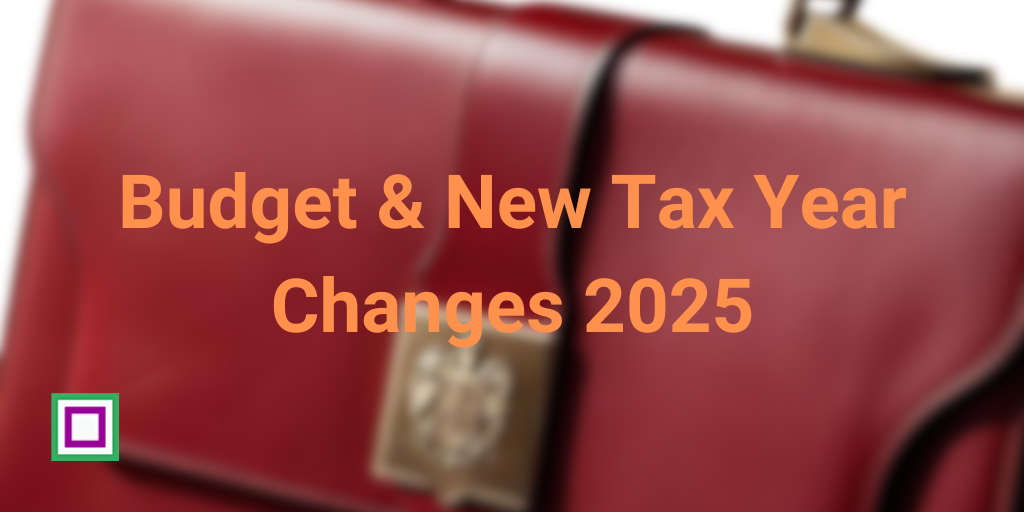What does the Budget mean for you?

Here’s how Rachel Reeves’ first budget will affect personal and payroll matters (assuming that it all comes into being):
Headline announcements
- Taxation & wages for salaried people.
The rates of income tax and National Insurance Contributions (NIC) for employees will remain the same as promised.
The income tax band thresholds will rise in line with inflation after 2028. This will provide small benefit as slightly fewer people will be drawn into the higher rate.
The VAT rate will also remain at 20%.
There are changes to capital gains tax on selling shares with the basic rate rising from 10% to 18% and the higher rate increasing from 20% to 24%.
The BBC has further details here.
- Taxation & wages for the self-employed.
There have been no changes to NIC contributions for the self-employed this year. The Small Profits Threshold rises from £6,725 to £6,845 for the 2025/ 26 tax year.
- Business taxes
Secondary Class 1 National Insurance Contributions (Employers NIC) will rise from 13.8% to 15.0% on 6th April 2025.
The Secondary Threshold (when employers start to pay) will decrease from £9,100 per annum to £5,000 pa at the same time which will increase the NIC bill for employers.
On the positive, the Employer’s Allowance (EA) will increase from £5,000 to £10,500 which will offset some of the rises that the changes to the threshold caused.
Also, the £100,000 NIC bill threshold for EA eligibility will be scrapped, meaning all eligible companies will get the EA.
There is currently no mention if sole director limited companies will again be allowed to claim the EA (currently they are not eligible).
- Minimum wage
There is good news for those on the National Living Wage which will increase from £11.44 per hour to £12.21 per hour for those aged 21 and over from April.
The rate for 18 – 21 year olds will rise from £8.60 to £10.00 at the same time.
- Benefits In Kind
The roll-out of the mandatory use of payroll software to report and pay tax on benefits in kind will start in April 2026.
- The Workplace & State Pensions
The basic and new state pension will increase by 4.1% next year.
- Other measures
Fuel duty was not mentioned and so remains the same.
Taxes on tobacco will increase by 2% above RPI (12% above RPI for hand rolling tobacco).
All alcohol duty will remain frozen until 1st August 2024.
Detailed thresholds for Tax year 2025 - 26
- Tax thresholds
As mentioned above, the income tax band thresholds will rise in line with inflation after 2028. This will provide small benefit as slightly fewer people will be drawn into the higher rate.
The Personal Allowance remains at £12,570 per annum, meaning that no tax is paid on wages up to this figure, £1,048 per month or £242 per week.
There are three tax bands for earnings above £12,570:
Basic Rate 20% on £1 - £37,700 (i.e. for total earnings £12,571 - £37,700)
Higher Rate 40% on £37,701 - £125,140 and
Additional Rate 45% on £125,141 and above.
- New tax codes
Form P9X from HMRC gives the tax codes to use from 6th April 2025.
The codes remain the same as the previous tax year.
- National Insurance
The Class 1 National Insurance rate remains the same.
The lower earnings limit (LEL) is the point at which you can claim qualifying years for the state pension but NI rate is 0%. For 2025 – 26 it is £6,500 per year. If you employ someone and pay them this amount or more you have to register for PAYE.
The Primary Threshold is where the employee starts paying NI and the Secondary Threshold is where the employer starts paying NI.
The bands are:
| Threshold | Pay per week | Pay per month | Pay per annum | Rate (category letter A) |
| Lower earnings limit (LEL) | £125 | £541 | £6,500 | 0% |
| Primary Threshold (PT) | £242 | £1,048 | £12,570 | 12% |
| Secondary Threshold (ST) | £96 | £416 | £5,000 | 12% |
| Upper Secondary Threshold (under 21) (UST) | £967 | £4,189 | £50,270 | 2% |
| Apprentice UST (AUST) | £967 | £4,189 | £50,270 | 2% |
| Upper Earnings Limit (UEL) | £967 | £4,189 | £50,270 | 2% |
Employers National Insurance (for category letter A) is 0.00% for earnings at or above LEL up and including ST.
For earnings above ST up to and including UEL/ UST/ AUST, it is 13.80%
The Employers National Insurance Allowance increased from £5,000 to £10,500 per year. You are only eligible if your total Class 1 NICs liability is below £100,000 in the tax year before the year of claim. It will also start to operate as de minimis state aid.
HMRC have further details here.
- National Minimum Wage
The national minimum wage goes up on 1st April:
| Year | 21 and over | 18 to 20 | Under 18 | Apprentice | |
| April 2024 (current rate) | £11.44 | £8.60 | £6.40 | £6.40 | |
| April 2025 | £12.21 | £10.00 | £7.55 | £7.55 | |
| Increase | 6.7% | 16.3% | 18.0% | 18.0% |
Almost all workers are entitled to it by law.
- The Workplace Pension
The contribution rates for both employers and employees remain the same. There are currently no plans for future increases.
Auto-enrolment occurs when a worker is between 22 and State Pension age and earns at least £10,00 per year.
The employer’s contribution is 3.0% and
The employee’s contribution is 5.0%.
This gives a minimum total of 8.0%. However, should the employer pay more, say 4.0% then the employee, should they wish, could pay less, say 4.0% and still maintain the 8.0% minimum. Both employer and employee can pay more than the minimum.
- Statutory Sick Pay (SSP)
This was not mentioned and currently remains at £116.75 per week. The first 3 days of any sick leave remain as ‘qualifying days’.
Hopefully this has been of use as a checklist of things to do. It is not comprehensive and you should check on maternity & paternity pay, student loans, etc. as appropriate.



